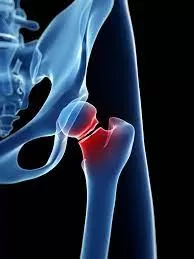New York, March 13, 2024 : A recent international meta-analysis published in Osteoporosis International has identified a significant correlation between self-reported falls and heightened fracture risk, with men exhibiting a slightly higher risk than women. The study, titled “A meta-analysis of previous falls and subsequent fracture risk in cohort studies,” pooled data from 46 prospective cohorts comprising over 900,000 individuals.
Lead researcher Douglas P. Kiel, M.D., MPH, director of the Musculoskeletal Research Center at the Hinda and Arthur Marcus Institute for Aging Research at Hebrew SeniorLife, highlighted the importance of incorporating previous falls into fracture risk assessment tools like the FRAX (Fracture Risk Assessment) Tool. “Previous falls have long been recognized as a significant risk factor for fractures, but until now, they have not been factored into the FRAX algorithm,” said Dr. Kiel.
Key findings of the meta-analysis include:
- Increased Fracture Risk: Individuals with a history of falls within the past year were found to have a significantly higher risk of any clinical fracture, osteoporotic fracture, major osteoporotic fracture, and hip fracture. One or more previous falls were also significantly associated with an increased risk of death among both women and men.
- Sex Disparities: The association between previous falls and fracture risk varied by sex, with men exhibiting higher predictive values compared to women.
- Independent Risk Factor: The increased fracture risk linked to previous falls was largely independent of bone mineral density, highlighting the standalone significance of falls as a risk factor. A previous fall in the past year confers a significantly increased risk of any clinical fracture, osteoporotic fracture, and hip fracture, with the increase in risk varying between 36% and 59% depending on the fracture outcome and sex.
“These findings underscore the importance of incorporating previous falls into the FRAX algorithm,” emphasized Dr. Kiel. Integrating this information into tools like FRAX can enhance their predictive accuracy and help healthcare providers more accurately predict fracture risk, thereby tailoring preventive strategies to improve patient outcomes.
The study’s findings have significant implications for fracture prevention and underscore the need for comprehensive risk assessment tools that consider a patient’s history of falls. By identifying individuals at higher risk of fractures, healthcare providers can implement targeted interventions to reduce fracture incidence and improve overall patient care.












